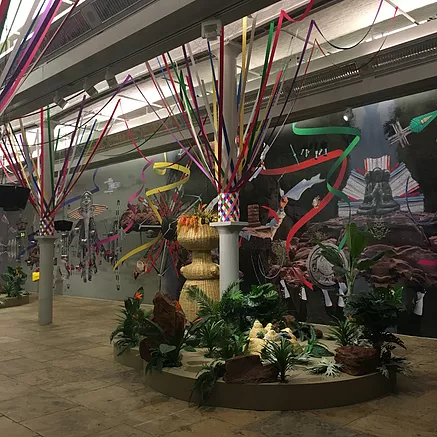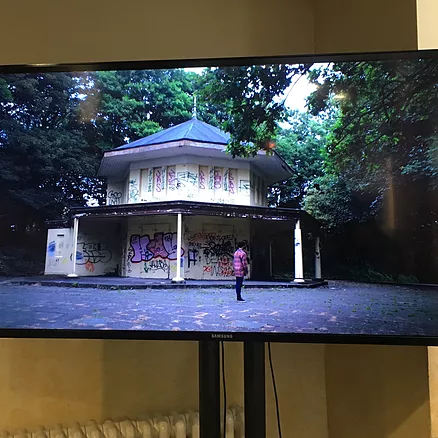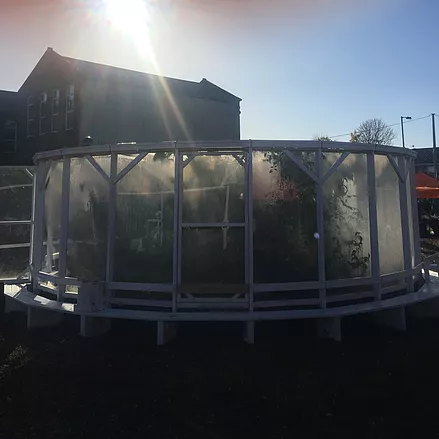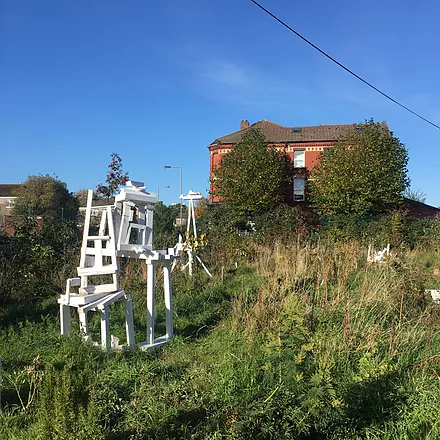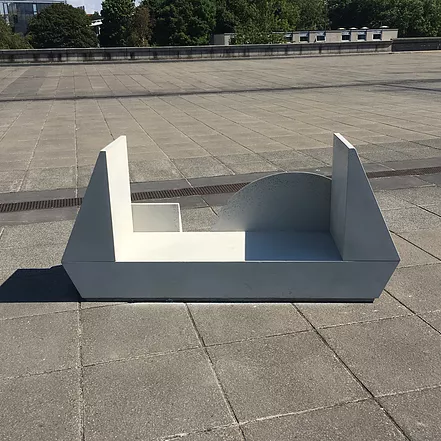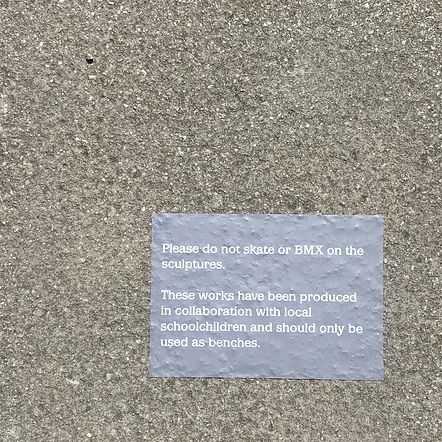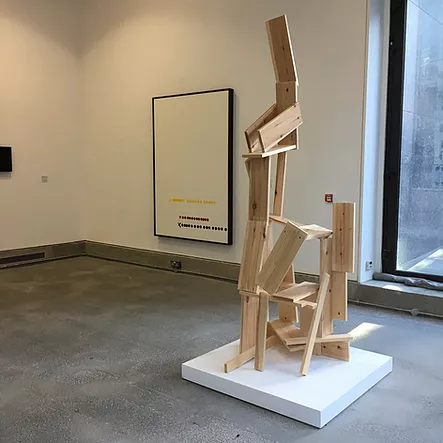Liverpool Biennial 2018
GDLP
Emoji summary: 🙄☢️🎬
I want the Liverpool Biennial to be so good. I want it to b this full dream-fountain of art and ideas that are presented to our city with care, and hopefully by people in good spirit and manner. It could be something we learn and grow with, a festival we’re excited by, expanded; but more and more, it isn’t. Its energy is flagging and I sense people’s patience is too. The Biennial has developed a sour reputation in the city and beyond not just for its sometimes awkward art intrusions, but for being a harmful place to work and work with. It pyaaaa makes no sense for me to write this text because Liverpool is small and scared. critique and definitely institutional critique are rarely seen as support in the city but instead as attack. but like, who else is gonna do it. I want to use my position as an independent writer here to say my bit and also put forward what others cannot for fear of getting fired or defamed, all under the umbrella of critical support. no one can fire me, I just, stg, every convo I have becomes artists anonymous. everyone else is tangled in a system they cannot push back against. The conversations at exhibition openings and behind closed doors are amazing but what good are they staying there? zero reception to critique often defaults in a conservative scene led by a corporate tone that is anti-radical, straight, white, able-bodied, safe, selfish. I wanna live in a city where the arts represents a better politic than that, i want us to shake it off before it settles. And also, I want what I say to be taken seriously by a Biennial that calls The White Pube cyberbullies because our criticism takes place online; one that wont sit on a panel alongside us because we’re below them. I want them to read this, print it out, have meetings, and to take what I offer as points to improve upon. I do NOT want them to go after the people who have confided in me, that would mean they have missed the point completely. criticism can lead to renewal, and it would be good for them to hear people’s experience of working with them + broadly how the city sometimes feels, in order 2 cleanse n move forward.
First off, on the organisation itself (then we can get to this year’s show): the staff team is and always has been so white. As an organisation whose main charitable objective is ‘commissioning and presenting international art,’ how is that invitation heard by artists of colour when the curatorial hand is… so white? awkward, unbalanced, makes me feel weird for everyone involved - and i wonder how many people have not thought to apply because the staff page on the website is, again, wHite. I don’t know why they are not held to account for this. Every so often assistant curators of colour come and go but it’s brief. how typical.
Next, there are paid and unpaid internships alongside one another, and then volunteers too?? from conversations this seems to cause an embarrassed tension amongst those starting out, bc it’s an unnecessary hierarchy of who deserves the genuinely useful opportunities and who does not. Plus, the unpaid interns on curatorial traineeships report being left to their own devices week after week in the office, learning nothing and rarely having a conversation with a curator even though so much is promised from the call-out. They wonder why they’re even there except it’s obvious, it makes the biennial look like generous developers and educators; it’s free credit; it’s a trap; it exploits.
however, i am not surprised curators aren’t around to nurture the trainees the biennial take on because, from all reports, that office is a ‘pressure cooker.’ i know arts orgs can often bring together stressheads working to a deadline but i feel some type of way when staff report ‘worsening mental health’ and being ‘traumatised’ by superiors berating them for mistakes that have been caused by bad admin and no 1 person in particular. Someone told me they hate Liverpool now because of their year with the Biennial!, and it appears people stick around for a few months to a year and are rarely able/willing to stay at their job. from the top to the bottom of the liverpool art ecology, it just seems to be known that working with them can be a nightmare but people and other arts organisations and host spaces need money and the biennial has prestige i guess. The turnover there is telling tho; after this year’s show opened, the entire development team bailed. whats scarier is a lot of the staff feel they cannot leave because they need the money, obviously, but are stuck with a job that is ruining their health, one that isn’t creative, fulfilling or happy. ur hopes for an arts organisation flushed with money is that conversations behind closed doors would be creative only, but it doesn’t sound like that’s the case. The picture i’ve gotten from people over the past few years is of a group of stressed bosses lashing out on the underpaid ppl below em. u kno it’s not upper-management who suffer, who go home stressed and upset to partners. they’re probably getting paid enough to sleep well at night.
One strand of the biennial staff is their team of Mediators who lead tours, open and close shows, and supervise volunteers. For the beginning four weeks in the role, one Mediator told me that because there was no structure to their days and everyone was getting pushed to their limits balancing manual labour (literally finishing off artworks in time for the opening) and studying the artists ready for tours, there was hardly ever a lunch break. The Mediator was exhausted and physically sick because of it. After everything opened, another problem became clear: there was no defence from the occasional bigoted public. At points this summer members of the public racially insulted, intimidated + mocked mediators and volunteers while they were out and about invigilating. The front of house team addressed each problem as it happened but there was no follow up, no counselling, and no wonder when there simply appears to b no policy in place to deal with such an incident. This is a widespread problem in ALL arts organisations here, that working with the public can be a fucking nightmare and the arts needs to think about how they’re gonna protect and care for their own when shit happens - until then you’re putting the lowest on the pay scale, and the unpaid, in danger of daily trauma. I hope you get my sense of urgency there. Mediators I spoke to valued that the position was well paid, helped their confidence and gave them great experience in public speaking and talking about art; but they mourned the lack of structure, the impact their job was having on their lives and relationships bc of how it affected their mental health, and obviously the social + emotional danger it continued to put them in. they wouldn’t do it again. It’s fine that some people go through this and have a perfect experience (if you are reading this and that’s you, ask yourself if you’re cis and white), and ofc once I publish there’s bound to be people who come out in support of their time working with the Biennial buuuuut I ask, is the aesthetic experience of the Liverpool biennial worth the worsening mental and physical health of its staff on the ground? it’s just not. no art is even that good. And I’m sure the Biennial doesn’t want this either but from the sounds of things you would think this was a new organisation, not something in its 20th year. I guess if the turnover is the way it is no one ever stays round long enough to fully structure the place and its operations, and it will just definitely uphold a legacy of problems if criticism and betterment isn’t encouraged inside the institution as well. Where does it tbh? And does a job exist like, idk, a queer eye auditor who can come in and sort everything out? I’ve literally been critic-in-residence at institutions and festival where they’ve invited such advice and paid me for it. Y are the biennial keeping their hands in their pockets. dw i’ll give you this one for free.
With a house so disordered, do sponsors not know the whirlpool their money is being dropped into, because who’d want to be associated with that? I know that’s a serious comment but this whole review is. so much money and so many people involved: In 2017, Liverpool Biennial Of Contemporary Art Limited’s income was 1.6M and their spending 2.2, with 24 paid staff and 108 volunteers. that’s on an OFF year, the biennial is open on evens. i am on the floor, can someone pick me up.
There’s also the sad sad truth the Biennial still supports a sexist and racist curator on their Associates programme. Just throwing that out there. And this next concern is a long rumour but I want to include it purely because I think it’s valuable for the reader + subject to know how they are seen in this city, and what can be assumed of them because of their reputation and how little faith many of us have in their identity. I just want to once again repeat it is a RUMOUR. So, you might have seen the controversy surrounding Banu Cennetoğlu’s work listing the ‘34,361 documented deaths of asylum seekers, refugees and migrants who have lost their lives within or on the borders of Europe since 1993.’ These took the form of posters on the boarding down Great George St, which for context is the road connecting town with L8 - a postcode in flux as it is currently being gentrified by the baltic triangle and people who can afford £7 sweet potato chips. the road is just a road in the shadow of the cathedral, n the boarding along it was the site for Cennetoğlu’s drama. Her posters were taken down two n a half times - the first time was done very cleanly, the second time they were ripped down n across, and the third they were torn and graffiti’d over. After the first incident, following the lead of the biennial’s statement, every media outlet went into crisis mode. Frieze, Hyperallergic, A-N, the guardian, all writing about anti-refugee sentiments in Liverpool. I support the artwork and the statement it makes but i was honestly shocked at the publicity bc i thought it was an overreaction - that it was probably scals or drunk people - but also not surprised because leftwing art world naturally supports the narrative that racists are bad and art is good. same, ok. What has circulated since is the rumour that the first time the posters were removed, it was actually done so by the brothers’ whose turf that was - u kno, for O2 Academy posters and nights at Heaven. all postering is under their control; officially its make it easier for the council if it’s one business responsible for what can be an environmental and visual mess, rather than a load of students doing cheapo work of it - so no wonder Cennetoğlu’s work was taken down noticeably *carefully* the first time. The RUMOUR then asks: did the Biennial start their sympathetic narrative (the performative activism of which absolves them of the white guilt they hold as an organisation who rarely work in active politics, just aesthetics), THEN discover their artist’s work was not actually taken down maliciously but by business men, and is it possible they ripped the posters down themselves the second time (badly, rushed) to cover their own backs and keep the story going - which had so quickly gone national and prompted vigils of support? My gut says ahhhh that’s too far, and lol they don’t have the nerve to pull it off. What i do reckon is, the fact they decided to give up reinstalling the work and instead lean on the statements they’d put out (co-signed by the artist), probably encouraged racists within the city to go out in the middle of the might and rip the posters up themselves. the biennial + Cennetoğlu had put out the bat signal, when what they could have done is print them off again and again. It’s like, the cheapest work to reinstate. It would have been stronger to have made a stand that way instead of letting bastards win, and likely, refugees in the city uncomfortable that such a big organisation has limits on how much they’ll even support them. Why is everyone spineless. I’m worried that the opacity of the Biennial means rumours like that can be spread and be believed by both mortals and arts directors in the city. I wonder if they were more transparent generally in how they operate could they have avoided this story brewing.
a breather. check twitter, have some water. And Biennial gals if you’re reading this and seething, please see it as something in your power to change! this is all in the name of a better biennial. let’s now continue with a focus on this year’s show >
What the Biennial are good at is bringing in new (and old) international names… but in a way bc of who they all actually are i am continually like wow so it’s a load of white people taking credit for the aesthetic value these invited people of colour bring to the table. It’s the same issue as the curatorial duo Mother Tongue whose work might facilitate n support artists of colour but those 2 white women are also taking key opportunities away from curators of colour in Glasgow. anyway. This year, the Biennial’s curation was held together by the question ‘Beautiful world, where are you?’ ‘to reflect on a world in social, political and economic turmoil,’ Director Sally Tallant writes in the guidebook. it is a good starting point for curators and an accessible entry point for visitors, but in my ~ subjective opinion ~ I think it has made for a boring Biennial because they’ve just brought together 10 thousand hours of slow films and the odd sculptures and been like wow, so contemplative (✿◠‿◠). I also cannot with this year’s branding by Paul Elliman. it is cringey, the visual embodiment of TyPinG LikE ThiS or the spongebob meme EXCEPT THEY’RE SINCERE. it felt so out of date compared to what Glasgow International or even Whitstable Biennale might drape themselves in. u should get kellenberger-white in next time, everyone else is.
There were individual works of interest, of course, but i had to put blinders on to enjoy them because the curation was off, as tho they’d chopped up and jigsawed 40 artists around 22 locations that often didn’t make much sense. Take Mohamed Bourouissa’s work for example. The artist had built a ‘Resilience Garden’ with some plants native to Algiers n others that can be used for healing; it is a sister garden of one made by a psychiatric patient there, with whom Bourouissa designed the Liverpool version. It is in Granby, right, eyerolling placement as that is w the biennial piggybacking on the fertility of the area after Assemble came, went, and won the Turner Prize + also after Granby CLT has already commissioned the winter garden from local transphobe Nina Edge. It’s not that i’m saying a place can’t have two gardens but the CLT has already done the legwork to make public practice a possibility, haven’t they. And as it stands, arts activity in the area is polarising for local residents, some of whom love that art is being made there n others that see it is as the worst kind of artwashing - tools to make the poor area more palatable and a new edgy destination for art-audiences to culture-vulture at. Money for the art of course but none to reopen all the empty homes or do anything permanent and legitimately supportive etc. O also this garden is only open 3 hours every saturday afternoon, lol. So there’s that ye, but then Bourouissa also has two films at FACT, 20 minutes away: one shows the roots of his garden project as he sits in conversation with that patient. It is very nicely filmed, so gentle. The second film, a few steps away, is completely different in its energy and follows a group of men in North Philadelphia who perform with horses n costumes for their community (thats reductive but this is a long review). 1. why is the first film not at the site in granby? Why does it have to be in a white cube? because in fairness how are FACT pulling in diverse enough audiences for the right people, imo, to see it, n 2. the second film is brilliant but it should have had the room to itself, more chairs, and it feels a bit of a 2 for 1 / a reach, like the artist did the biennial a deal in including it. also wtf were Bourouissa’s wonky sculptures about, the ones placed around the garden? they were just gcse sculpture, unnecessary hotchpotches to fill the space.
Another jigsaw exhibition sat at the Bluecoat all summer long, where Abbas Akhavan, Melanie Smith, Suki Seokyeong Kang and Ryan Gander were sandwiched together. Smith’s film was enigmatic but i found everything else was low volume-boring. I guess for new readers here it’s good 2 know what my compass points are for things, and boring for me means quiet sculptures and almost all performance art that entails white people moving slowly; beige palettes, 99% of murals, repetition, silence. it ticked a lot of boxes. I want to look more closely at Gander’s work while we’re here. After workshops, Gander had offered the pieces of a broken up model of the Metropolitan Cathedral to a primary school and got a handful of kids to reposition those pieces. the artist then had these new compositions made into benches that went on 2 b placed at the empty backside of the cathedral’s grounds. Every year there’s a number of working-with-scouse-kid projects and I’ve deffo been naive to them in the past but now i am fully suspicious. If Gander’s workshop is underpinned by the ‘Montessori method of education, based on self-directed activity, hands-on learning and collaborative play,’ why were the images produced for the Bluecoat exhibition made by his studio rather than the kids themselves? they were TOO clean, too dry, aesthetics sanitised for Frieze maybe? the style and finish of all the work he presented here at the Bluecoat felt lazy, like the art was on pause or something. Anyway, after the benches were installed, signs were quickly added to ask skateboarders and BMX ppl not to use them but that feels so biennial ; as in synonymous with a killjoy move. Public things are for the public, and what happenedterya Montessori method anyway. On a more insidious note: why did the Biennial put out a vague-ass kickstarter for £10,000, AFTER the whole bloody thing had opened, to support Gander’s ‘high-quality artworks and the creation and distribution of free, widely-accessible digital resources for families and schools’? More worryingly, why was that kickstarter successful? 130 people raised £10,462. My educated guess is: i bet the Biennial overspent on something and decided they needed to recuperate $$$ by attaching the problem to Gander’s work because they could play the kid card. thats what i’d put my money on. Big if true. I also, frankly, don’t think arts organisations of the scale of the Biennial should have the right to crowd-fund. Genuinely interested to know how they justify doing tha and also pls can I see your budget line by line, that would b interesting. I know arts funding is getting tighter and more difficult to access but should you not live within your VERY BIG means instead of putting the burden on individuals/fans/the public that have already supported you greatly with their taxes? finally, Why was Gander’s work across the Bluecoat and the cathedral, they r too far away from each other to make any sense. The satellite pieces Gander had made could have been in LJMU’s Exhibition Research Lab, 1 second away. But the benches are underwhelming in the space!!! and educational resources shouldn’t cost that much anyway!!!
but that’s the way it goes. I think the Biennial suffers from having eyes bigger than its budget. The arts in general feels like a desperate place at the moment, under pressure to show its public the visual and cultural sector can still do a song and dance even tho its pay is getting sliced. if I were a director I would avoid the capitalist trajectory of always trying to get bigger and louder; i would withdraw /// scale down and do a few good things instead of burning out in every way possible. It’s sad isn’t it. I never thought the art world would be like this, i thought we’d all be happier. I thought exhibitions would be more interesting. I thought I’d be excited more than I am. Is it that arts orgs are trying to become corporations and hurting everyone in the process? dryin the whole thing, so straight and monied. in their move here, have the Serpentine alumni now running the show brought their London mannerisms w em? i don’t get the identity of the whole show, it’s not clear to me what they want to do anymore with the art even. Biennials between 2008-2012 were these really clear pavilion set-ups with a periphery of great spectacle, so user-friendly, humanised, imaginative. Then they started to get cheesy. And now, it seem to be caught between enacting what it wants versus what the city demands of it. in the meantime it comes off as purely a business and engine through which to make money for its minimal staff count, art more and more an after thought as the years go on. This accusation is most fitting when artists are brought in to work through public practice, something dear 2 my heart cause I know how much care, time and respect it requires. u already can guess where this is going after I’ve outlined how stretched the whole team seems. But when artists are brought into a city often completely new to them, there needs to be an investment in how they are introduced to the group of people they are supposed to get on and work with; invitation assumes a duty of care to make sure artists can work under the best conditions.
When artist Rehana Zaman came up to begin her work with Blackburne House, she came up against some of these issues. Firstly, the biennial’s scheduling left her off the artists’ tour of liverpool taking place the week before she was first brought up north, which meant not meeting the others and losing out on a solidarity that might have made the whole exp easier. Her first day up here, ready to invest the time and attention in those key people that would help enable the entire project, Zaman was given an itinerary of back to back meetings every half hour that meant first impressions were hastyyyy. They knew a few months earlier the artist had had her son, but the itinerary did not account for time spent breastfeeding or the energy / rest / lunch break that needs. As someone that's worked with the public on longer term projects like this, i cannot stress how important it is to literally spend time with people in order to undo their suspicion and gain a necessary amount of complicity, n I feel for Zaman when she says it was embarrassing to have been rushed that first day. Artists end up looking like intruders and busybodies if they don’t slow down for the people they’re asking so much from. But it went on and on; n there was no effort to maintain those Blackburne House relationships while the artist was out the city, which public practice needs like architects literally need builders. trust is the fabric of the thing. Not being able to rely on anything happening while she was away, and not being paid enough, really, to cover the amount of time it took her to keep up the presence needed belies the Biennial as not getting or respecting what it entails to produce art in collaboration with a given public. They expected something they couldn’t afford which brings into question why they’d even invite it (corporate social responsibility ding ding ding); sad when of course artists will so often work past the budgeted time to make their projects successful, which devalues an artist fee that ye, just needed to be higher in the first place. On viewing their wider activity, it’s like the biennial is only intent on polishing its white cube exhibitions and thinks those are worth more than anything to do with the actual people in this city - something I’m not convinced their current institutional philosophy allows for in practice. Take the whole farce of Lara Favaretto’s giant monument in the 2016 show - it cost a bomb to make and then it was dropped onto a small, poor road in L8 (biennial’s fave postcode lol). The monument had a slit in it like a giant patronising money box which went on to only raise £1224 for local charity Asylum Link. I say ‘only’ because the sculpture cost a lot more than that, and the artist fee was likely at least double. When I went to see it I ended up speaking to the man who ran the offy at the end of the street, he was sat outside on a chair pointing at the mural he had made with his kids of Liverpool’s skyline and football clubs. He was fuming n asking me, isn’t my stuff better than that rock? There were no workshops, no foreplay to forewarn of Favaretto’s work. It was an intrusion and an insult that has angered people to this day. Also back 2 Blackburne house for a second, I think for public practice to sit right it needs to have a decided legacy, otherwise its diversity and humanity is a flash in the pan and the whole thing was just about inserting an artist into a not-white-cube site to fulfil some higher creative strategy. The Biennial have agreed to lend the cameras purchased with the materials budget for Zaman’s work to Blackburne House’s Black Women Filmmakers Collective for a few years but it would mean more for them to be given over. They could be supporting this group going forward, if the group want it that is. I hope they also make a concerted effort to find funding for the Resilience Garden, before it just withers away.
This is nearly at 5000 words but good to squeeze all contents of the spot while we’re at the mirror! My last throw away comments would be: too many videos in this year’s festival to the point where it felt like a cop-out, alienating as a visitor - this is not a film festival remember. I was most impressed by the Nigerian Monarchs exhibition in Open Eye Gallery of portraits by George Osodi clap clap, which wasn’t even curated by anyone in the biennial but by their own Thomas Dukes, so credit where credit’s due. I was excited for Naeem Mohaiemen’s film in the court room of St Georges Hall but the lights were on and idc if that’s pedantic. Did anyone else die at the white twerking in Inci Eviner’s film in the basement there? Too much plastic in Haegue Yang’s work at Tate Liverpool. And I was dead excited for Holly Hendry’s work but the Biennial advertised something much more spectacular than her outcome was and wow I just fully miss the spectacle of past shows and jellyfish inside walls and shit like that. why’ve you all stopped bein fun? The Giants made people cry, you just make people yawn. N i would also like to know what the Biennial is doing, if anything, to resist the gentrification of the Baltic Triangle where their offices are based. Finally, I wish that instead of ignoring me, Director Sally Tallant had replied to my email asking about all of the above but alas she did not! I had asked her what they have in place to look after staff and volunteers mental health; y the intern thing; if they had plans to improve them; why people are ‘traumatised’ after working with them; and y r they so white. Maybe the Biennial babes will release a statement about my review denouncing everything I have opined, maybe they will pretend to care. Let’s wait and see n pray it all gets better.
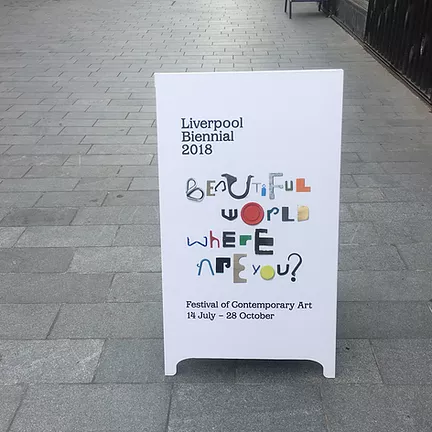
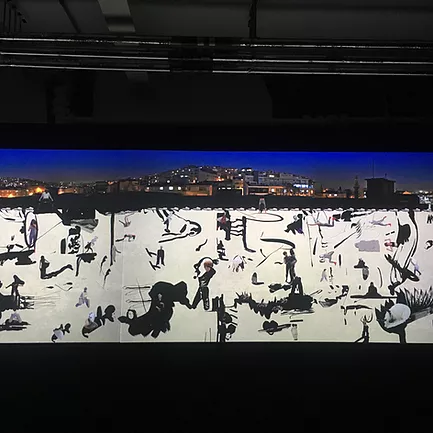
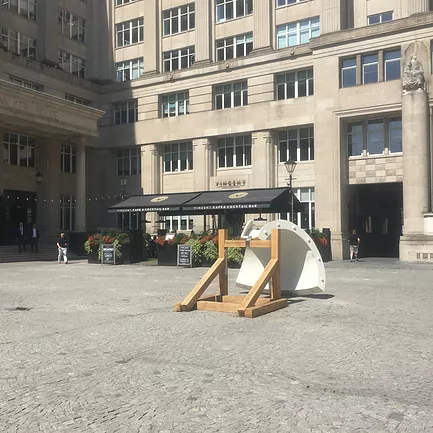
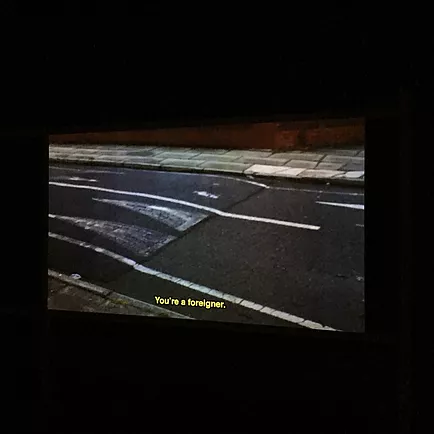
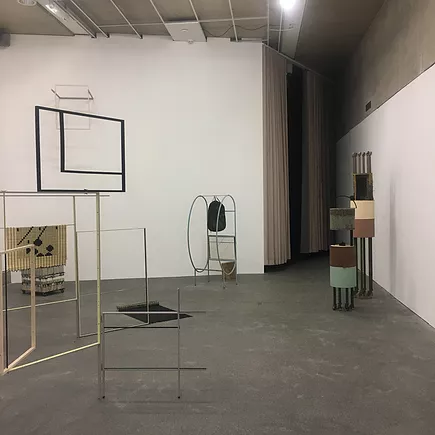
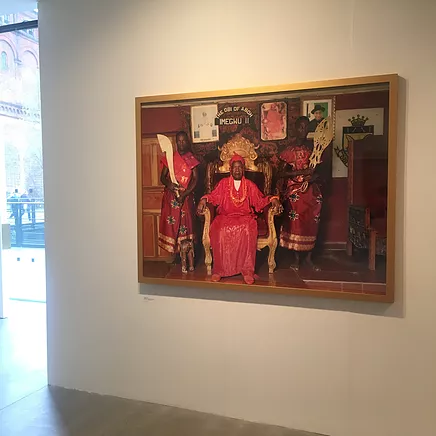
![one of the posters that lists the deaths of refugees and migrants is half ripped off the wooden board its on]](/images/IMG_4994_JPG.webp)
